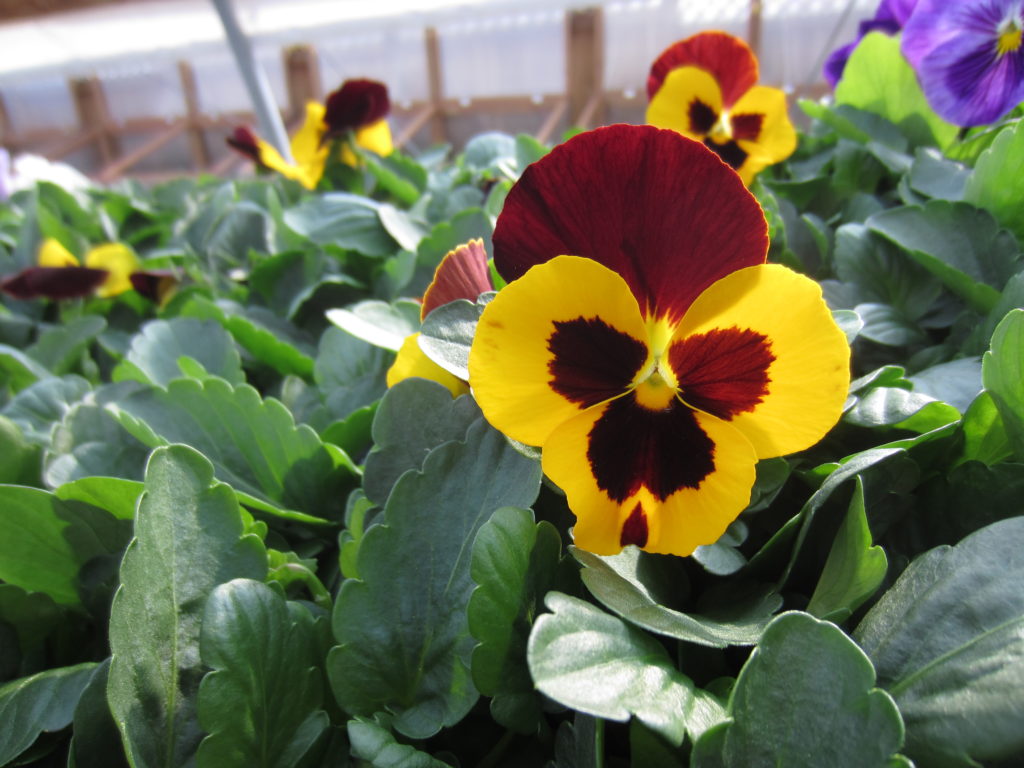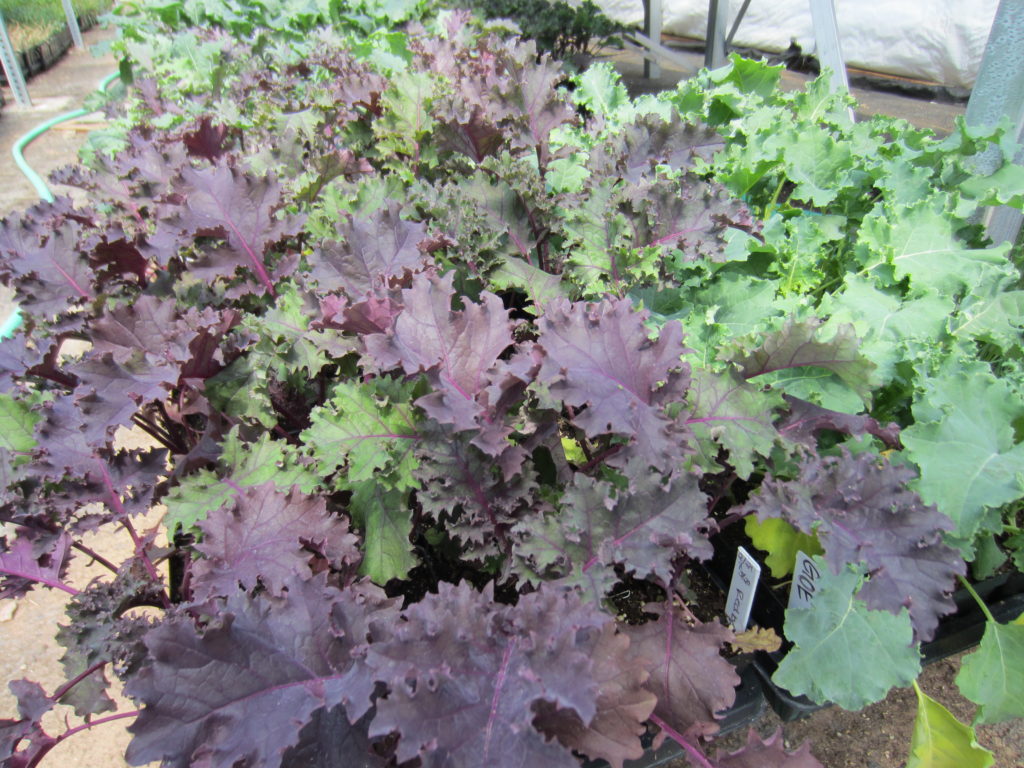
by Rita Jokerist, Horticulturist, The Gardens on Spring Creek
For all the forces that pull at a gardener’s hand, none is more powerful than the urge to work the soil in the spring. We ache for the sporadic warm sunny days that whisper of the season’s beginning. One way many gardeners sate their urges when it is too early to garden in earnest is to put in a cool-season annual display. While these annuals may not all last in the summer heat, they do provide much-wanted color after a dreary winter, and many are edible to boot.
 The go-to staples of early season color are violas and pansies, both of which are actually perennials in most USDA cold hardiness zones. Violas commonly come in blues, whites, purples, and yellows and are smaller and more abundant than pansies. These nickel-sized beauties are more tolerant of temperature shifts, which means they can bloom further into the heat of the summer than pansies typically will. Larger pansy flowers offer the same color palette as violas plus oranges, pinks, and reds. They also offer more interesting “face options” – blotches, streaks or full color. Both pansy and viola flowers are edible, and you’ll often see them used to decorate desserts.
The go-to staples of early season color are violas and pansies, both of which are actually perennials in most USDA cold hardiness zones. Violas commonly come in blues, whites, purples, and yellows and are smaller and more abundant than pansies. These nickel-sized beauties are more tolerant of temperature shifts, which means they can bloom further into the heat of the summer than pansies typically will. Larger pansy flowers offer the same color palette as violas plus oranges, pinks, and reds. They also offer more interesting “face options” – blotches, streaks or full color. Both pansy and viola flowers are edible, and you’ll often see them used to decorate desserts.
Snapdragons also provide a pop of color in early spring. Their upright form contrasts nicely with other cool-season options, and they come in bright and welcoming colors – pinks, oranges, whites, yellows, and magentas. They are usually classified by heights as trailing, dwarf, intermediate or tall varieties. Some snapdragons can handle summer heat and will put on multiple rounds of blooms throughout the season if they are trimmed back and fertilized after each flush. Check your seed packet or plant tag to see what you can expect from your chosen variety.
A timeless filler plant for color and texture this time of year is Dusty Miller – a generic name given to many silver-leaved plants in several different plant families. Their white-gray foliage looks good with nearly any color combination, and its low-maintenance care is a part-time gardener’s dream. ‘Cirrus’ and ‘New Look’ offer rounder, fuller leaves while ‘Silver Dust’ and ‘White Diamond’ give more delicately-lobed foliage.
For richer color in a foliage-forward plant, members of the Brassicaceae family are perfectly suited to the job. Specifically, kales, cabbages, and collards offer more options than you may think – whites, greens, grays, blues, purples, magentas – and smooth, ruffled or feathery leaves contrast nicely with spring flowers. Common edible varieties work well in displays and can later be harvested, but there are also varieties specifically bred for ornamental purposes. Some examples are ‘Red Peacock’ and ‘Chidori’ kales and ‘Color Up’ and ‘Osaka’ cabbages.
Other edible options for foliage are Swiss chards and mustards. These cannot tolerate freezes, but they can handle a frost. Putting these into your display a few weeks later can help fill in the empty areas while adding contrasting color to the rest of your display. The go-to Swiss chard options for color and foliage are ‘Rhubarb’ for red ribs, ‘Oriole’ for orange ribs, and ‘Bright Lights’ for a striking combination of white, yellow, red and pink ribs. Mustard varieties well-suited for ornamental use are ‘Southern Giant Curled’ for its bright green ruffled leaves and ‘Red Giant’ for its large purple-tinted leaves. All of these can be eaten when you’re ready to trade out your display for frost-tender annuals later in May.
Support Northern Colorado Journalism
Show your support for North Forty News by helping us produce more content. It's a kind and simple gesture that will help us continue to bring more content to you.
BONUS - Donors get a link in their receipt to sign up for our once-per-week instant text messaging alert. Get your e-copy of North Forty News the moment it is released!
Click to Donate

